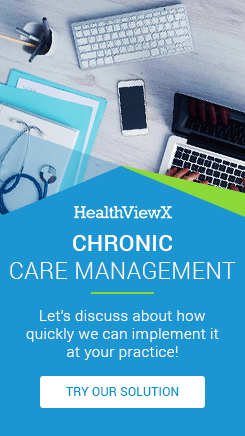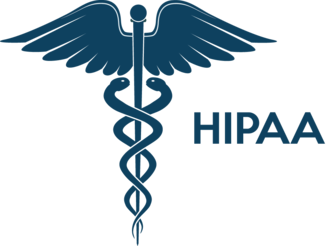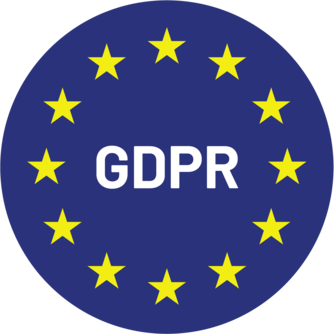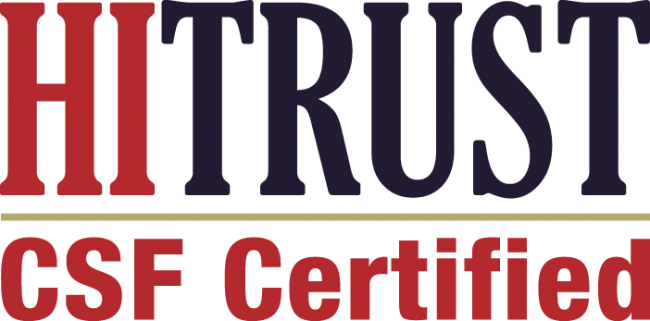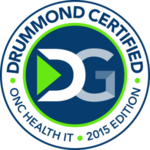Chronic pain affects more than function, it drives avoidable ED visits, polypharmacy, and fragmented care. To address this, Medicare created the Chronic Pain Management (CPM) service beginning in 2023, with monthly reimbursement for structured, team-based management of chronic pain.
Below you’ll find the exact codes, required elements, billing rules (including what you can bill with CPM in the same month), documentation tips, and an operations checklist. We’ll close with a practical playbook for maximizing reimbursement and outcomes using the HealthViewX Chronic Pain Management Application.
What counts as “chronic pain” for Medicare?
Medicare defines chronic pain as persistent or recurrent pain lasting longer than 3 months.
The CPM codes (HCPCS) and when to use them
G3002 — Chronic pain management and treatment, monthly bundle (first 30 minutes).
Covers a comprehensive set of activities (assessment, validated pain scale, person-centered care plan, overall treatment management, coordination with behavioral health, medication management, pain/health-literacy counseling, crisis care as needed, and ongoing communication/care coordination). Time threshold: ≥30 minutes in the calendar month. An initial, face-to-face visit is required to start CPM (see “Initiating visit” below).
G3003 — Each additional 15 minutes (add-on to G3002; may be billed multiple times per month as medically necessary once G3002 is met). Time threshold: ≥15 minutes per increment.
Key frequency rules
- G3002: once per patient per calendar month.
- G3003: unlimited billable add-on units in that month when medically necessary and documented.
Who can bill? Physicians and other qualified health care professionals (QHPs) who direct the service and meet incident-to supervision requirements for any clinical staff time counted. (See CMS E/M & CCM guidance for supervisory/“incident-to” rules.)
Required elements & documentation checklist (what to capture every month)
Medicare’s bundled description for G3002 expects the following to be performed and documented (tailored to medical necessity each month):
- Diagnosis, assessment, and monitoring of pain (with a validated pain scale/tool each month you bill).
- Person-centered care plan (strengths, goals, clinical needs, desired outcomes) – created/updated/maintained.
- Overall treatment management, including medication management (opioid risk/benefit discussion when relevant).
- Coordination with behavioral/mental health when indicated.
- Pain & health-literacy counseling, self-management support.
- Crisis care when needed.
- Ongoing communication and care coordination among relevant practitioners.
Tip: You don’t need to repeat every element every month; furnish and document what is clinically necessary that month, but time thresholds must be met for each code billed.
The initiating visit & telehealth
- Initial CPM requires a face-to-face visit with the billing practitioner for ≥30 minutes before you start monthly CPM billing. (If you’re continuing beyond a year, follow CMS initiating-visit expectations as referenced in current MLN materials.)
- After initiation, many CPM activities can be delivered virtually. Through September 30, 2025, Medicare continues broad telehealth flexibilities (including patient home as originating site and audio-only when appropriate/allowed). Follow current CMS/HHS telehealth policy for modality, POS/modifier, and documentation.
Can CPM be billed with other care management services?
Yes. CMS recognizes CPM (G3002/G3003) as distinct from other care-management/remote monitoring services. You may bill CPM in the same month as CCM, PCM, TCM, BHI, RPM, or RTM as long as you don’t “double count” the same time for more than one code. (RPM and RTM cannot be billed together in the same month.)
Places of service & who gets paid
CPM can be furnished in office, outpatient, or home/domiciliary contexts (consistent with incident-to and telehealth rules, when applicable). Payment rates vary by PFS locality and setting (facility vs non-facility). Always check the current Medicare Physician Fee Schedule for your locality and date of service; conversion factors and relative values may change during the year.
Consent, patient eligibility, and concurrent rules you should know
- Patient consent: Obtain and document the patient’s consent before starting ongoing monthly management (verbal or written). If the billing practitioner changes, obtain consent again.
- One billing practitioner per patient per month per service still applies for overlapping categories (e.g., RPM). Coordinate within your network to avoid denials.
- Time thresholds are strict: ≥30 minutes for G3002; each G3003 add-on is another distinct ≥15 minutes. Track practitioner/QHP time (and clinical staff time under appropriate supervision) separately from other billed services.
Bullet-proof documentation: what auditors look for
- Link the care plan to functional goals (ADLs, sleep, mobility, psychosocial).
- Validated pain scores recorded that month (e.g., NRS, PEG, BPI) and trend over time.
- Medication reconciliation & risk mitigation (PDMP check per policy, opioid agreement when indicated).
- Behavioral health screen/coordination when clinically appropriate.
- Time log with roles (physician/QHP vs clinical staff) and method of delivery (in-person, video, or audio-only with rationale).
- Care coordination artifacts (messages/notes with orthopedics, behavioral health, PT, pharmacy).
(These elements flow straight from Medicare’s G3002 bundle description and E/M/CCM MLN guidance.)
Common billing scenarios (with coding logic)
- Initial enrollment month: Perform the face-to-face initiating visit (≥30 min) and bill G3002 if the total CPM time that month reaches ≥30 min; add G3003 for each additional 15 min achieved.
- High-touch months (flare, med change, behavioral referral): G3002 + multiple G3003 units if medically necessary and time-supported.
- With RPM or RTM: You may bill CPM + (RPM or RTM) in the same month—never count the same minutes twice. (RPM & RTM cannot be billed concurrently.)
Operational pitfalls to avoid
- Missing the validated pain score that month → downcode/denial risk.
- No explicit face-to-face initiating visit before CPM → denial of first CPM month.
- Double-counting minutes across CPM and CCM/PCM/RPM/RTM/BHI → recoupment risk.
- Unclear supervision/incident-to when using clinical staff → compliance risk (follow current MLN & MAC guidance).
How to maximize reimbursement and care quality with the HealthViewX Chronic Pain Management Application
If you’re serious about scaling CPM compliantly while improving patient outcomes, the HealthViewX CPM Application streamlines the entire workflow:
- Time & effort capture built for CPM
- Auto-tracks practitioner/QHP vs clinical staff minutes; separates CPM time from CCM/RPM/RTM to prevent double-counting.
- Real-time alert when ≥30 min (G3002) is achieved; incremental alerts for each 15-min (G3003).
- Auto-tracks practitioner/QHP vs clinical staff minutes; separates CPM time from CCM/RPM/RTM to prevent double-counting.
- Templatized documentation mapped to G3002 elements
- Structured notes that prompt the validated pain scale, care-plan updates, med management, BH coordination, and patient education—every month.
- Care-plan builder + outcomes tracking
- Patient-centric goals with SMART targets (pain interference, sleep, function); longitudinal graphs for pain score trends and goal attainment.
- Telehealth-ready encounters
- Integrated video/phone visit logging with POS/modifier prompts aligned to current CMS telehealth flexibilities.
- Consent & eligibility workflow
- One-click consent capture (verbal/written), payer policy notes, and attribution controls (avoid “two providers billed” denials).
- Cross-program orchestration
- Works alongside CCM/PCM/BHI/RPM/RTM modules; the platform walls off time buckets to keep services distinct while enabling the same patient to benefit from multiple programs in the same month.
- Care-team coordination
- Tasking and secure messaging with orthopedics, PT/OT, behavioral health, pharmacy; audit trails that prove ongoing coordination for G3002.
- Billing intelligence
- Locality-aware prompts to check the latest PFS values and MAC policies; claim-scrubbing for time thresholds, modifiers, POS, and concurrency.
What this means in practice
- Higher clean-claim rate on G3002/G3003 (time and documentation never an afterthought).
- More complete revenue capture in high-touch months (the platform nudges you to add G3003 when appropriate).
- Better outcomes via a living, person-centered care plan and consistent patient education.
- Confidence in audits thanks to structured notes, consent artifacts, and time logs aligned with MLN guidance.
Quick start checklist (copy/paste for your team)
- Enroll: Verify chronic pain >3 months; obtain consent; schedule the initiating face-to-face visit (≥30 min). Centers for Medicare & Medicaid ServicesAmerican Medical Association
- Template: Use a CPM note that forces validated pain score + plan updates each billing month. Centers for Medicare & Medicaid Services
- Track time: Log practitioner/QHP and clinical staff minutes separately; stop double counting across CCM/RPM/RTM/BHI/PCM. NACHC
- Coordinate: Document messages/referrals with behavioral health, PT/OT, pharmacy. Centers for Medicare & Medicaid Services
- Bill: Submit G3002 when ≥30 min; add G3003 for every additional ≥15 min that month. Centers for Medicare & Medicaid Services
- Telehealth: Apply current CMS telehealth rules (originating site, POS/modifiers, audio-only allowances through Sep 30, 2025). telehealth.hhs.gov
- Review: Check the current PFS for locality-specific payment amounts and any in-year changes. Centers for Medicare & Medicaid Services
Sources & further reading
- CMS MLN: Evaluation & Management Services (includes CPM HCPCS G3002–G3003 definitions & thresholds), July 2025. Centers for Medicare & Medicaid Services
- CMS MLN Booklet: Chronic Care Management Services (contains CPM initiation/face-to-face note), June 2025. Centers for Medicare & Medicaid Services
- CMS Fact Sheet: CY 2023 Physician Fee Schedule Final Rule (creation of G3002/G3003 for CPM). Centers for Medicare & Medicaid Services
- HHS Telehealth Policy Updates: Medicare telehealth flexibilities through Sept 30, 2025 (originating site, audio-only scope). telehealth.hhs.gov
- National Association of Community Health Centers: CPM Reimbursement Tips (co-occurring care-management services permitted with CPM). NACHC
- Telehealth.HHS.gov: RPM/RTM billing rules & concurrency with CPM (no double counting; RPM & RTM not together). telehealth.hhs.gov
- CMS: Physician Fee Schedule (monitor current conversion factor and locality-specific rates). Centers for Medicare & Medicaid Services
Final word
CPM is purpose-built to support whole-person, coordinated pain care, and it’s reimbursed when you meet time thresholds and document the bundle elements. With HealthViewX Chronic Pain Management, you can operationalize CPM at scale, confidently capture G3002/G3003 each month, and most importantly help patients reclaim function and quality of life.


